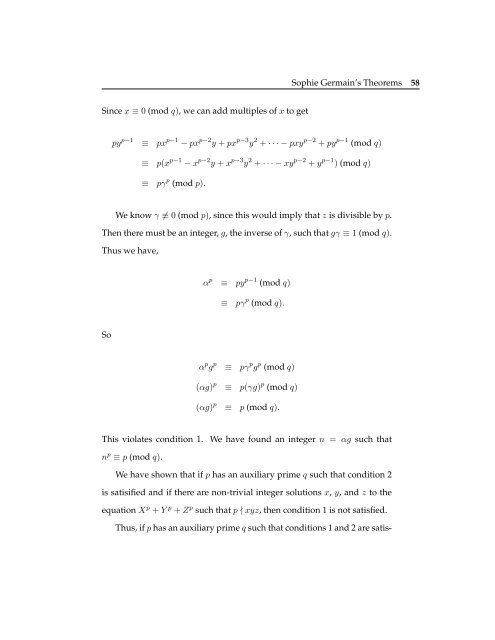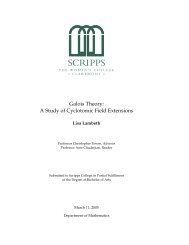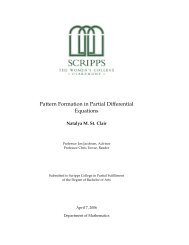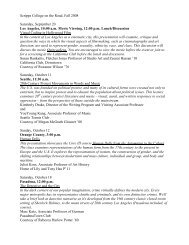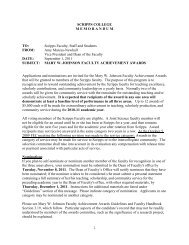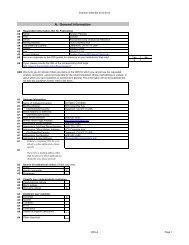Sophie Germain: mathématicienne extraordinaire - Scripps College
Sophie Germain: mathématicienne extraordinaire - Scripps College
Sophie Germain: mathématicienne extraordinaire - Scripps College
Create successful ePaper yourself
Turn your PDF publications into a flip-book with our unique Google optimized e-Paper software.
<strong>Sophie</strong> <strong>Germain</strong>’s Theorems 58<br />
Since x ≡ 0 (mod q), we can add multiples of x to get<br />
py p−1 ≡ px p−1 − px p−2 y + px p−3 y 2 + · · · − pxy p−2 + py p−1 (mod q)<br />
≡ p(x p−1 − x p−2 y + x p−3 y 2 + · · · − xy p−2 + y p−1 ) (mod q)<br />
≡<br />
pγ p (mod p).<br />
We know γ ≢ 0 (mod p), since this would imply that z is divisible by p.<br />
Then there must be an integer, g, the inverse of γ, such that gγ ≡ 1 (mod q).<br />
Thus we have,<br />
α p ≡ py p−1 (mod q)<br />
≡<br />
pγ p (mod q).<br />
So<br />
α p g p ≡ pγ p g p (mod q)<br />
(αg) p ≡ p(γg) p (mod q)<br />
(αg) p ≡ p (mod q).<br />
This violates condition 1.<br />
We have found an integer n = αg such that<br />
n p ≡ p (mod q).<br />
We have shown that if p has an auxiliary prime q such that condition 2<br />
is satisified and if there are non-trivial integer solutions x, y, and z to the<br />
equation X p + Y p + Z p such that p ∤ xyz, then condition 1 is not satisfied.<br />
Thus, if p has an auxiliary prime q such that conditions 1 and 2 are satis-


